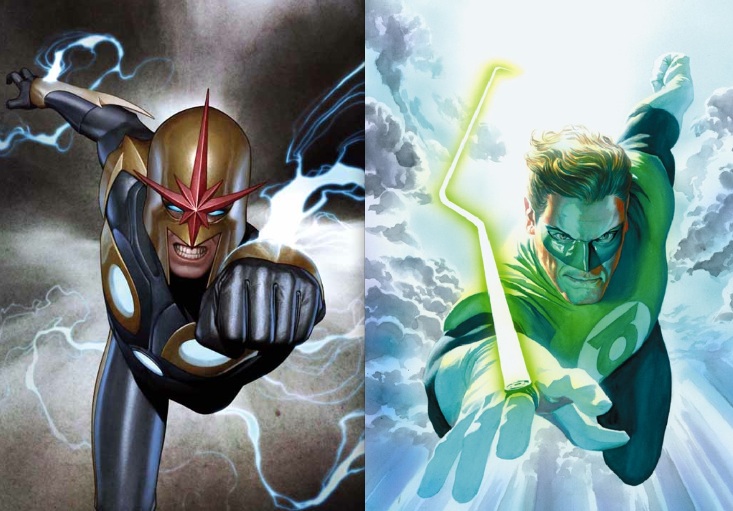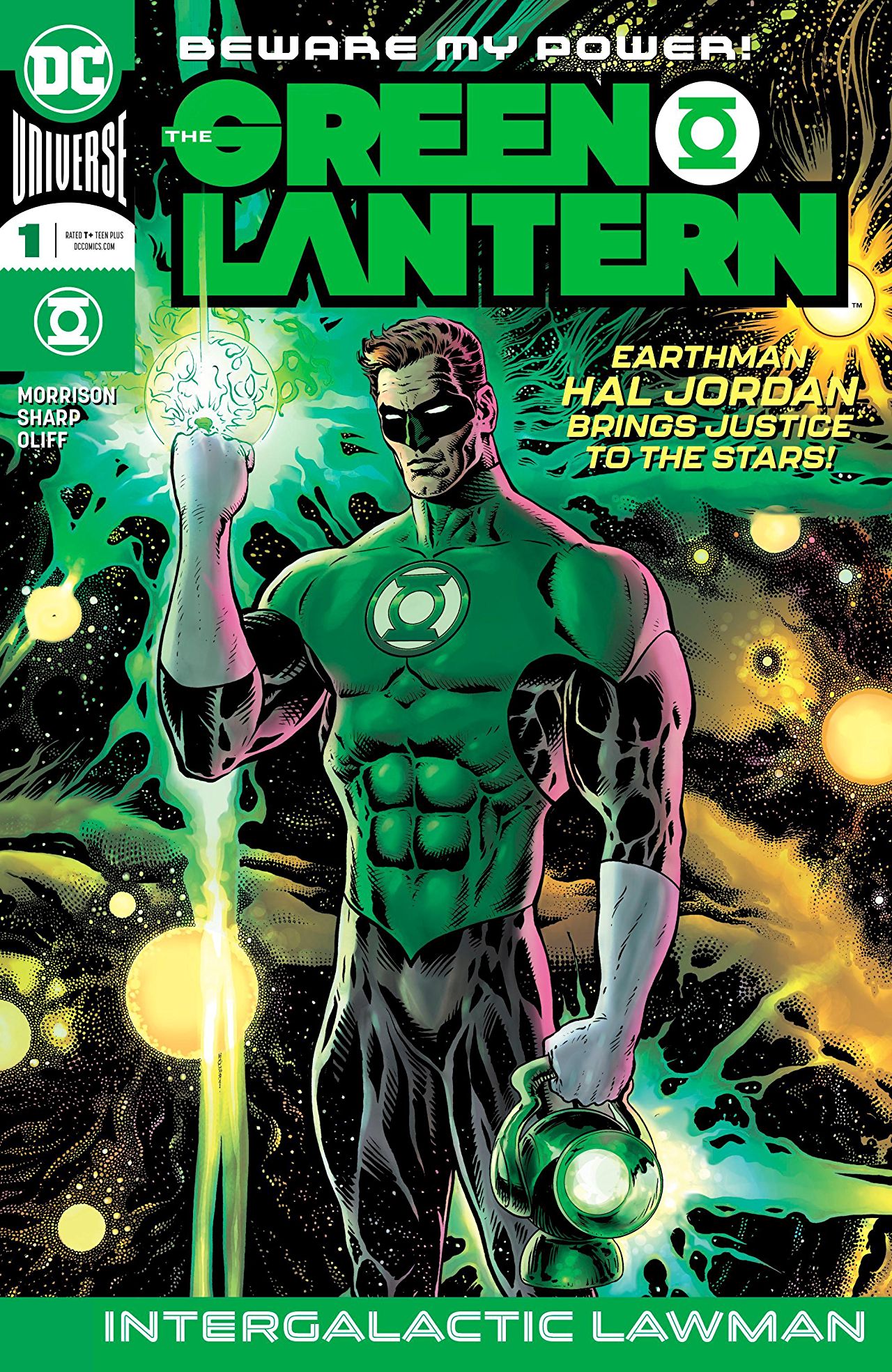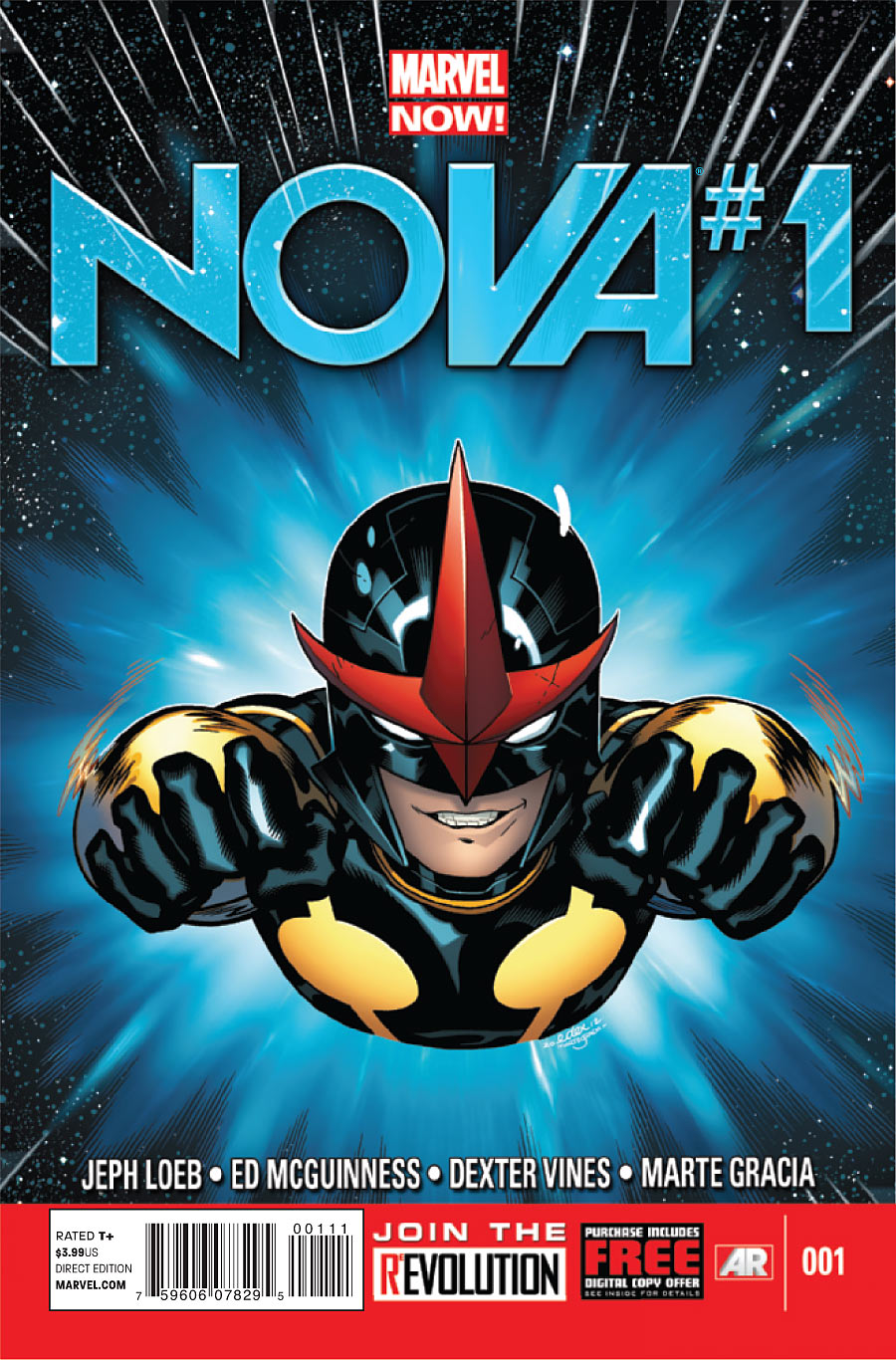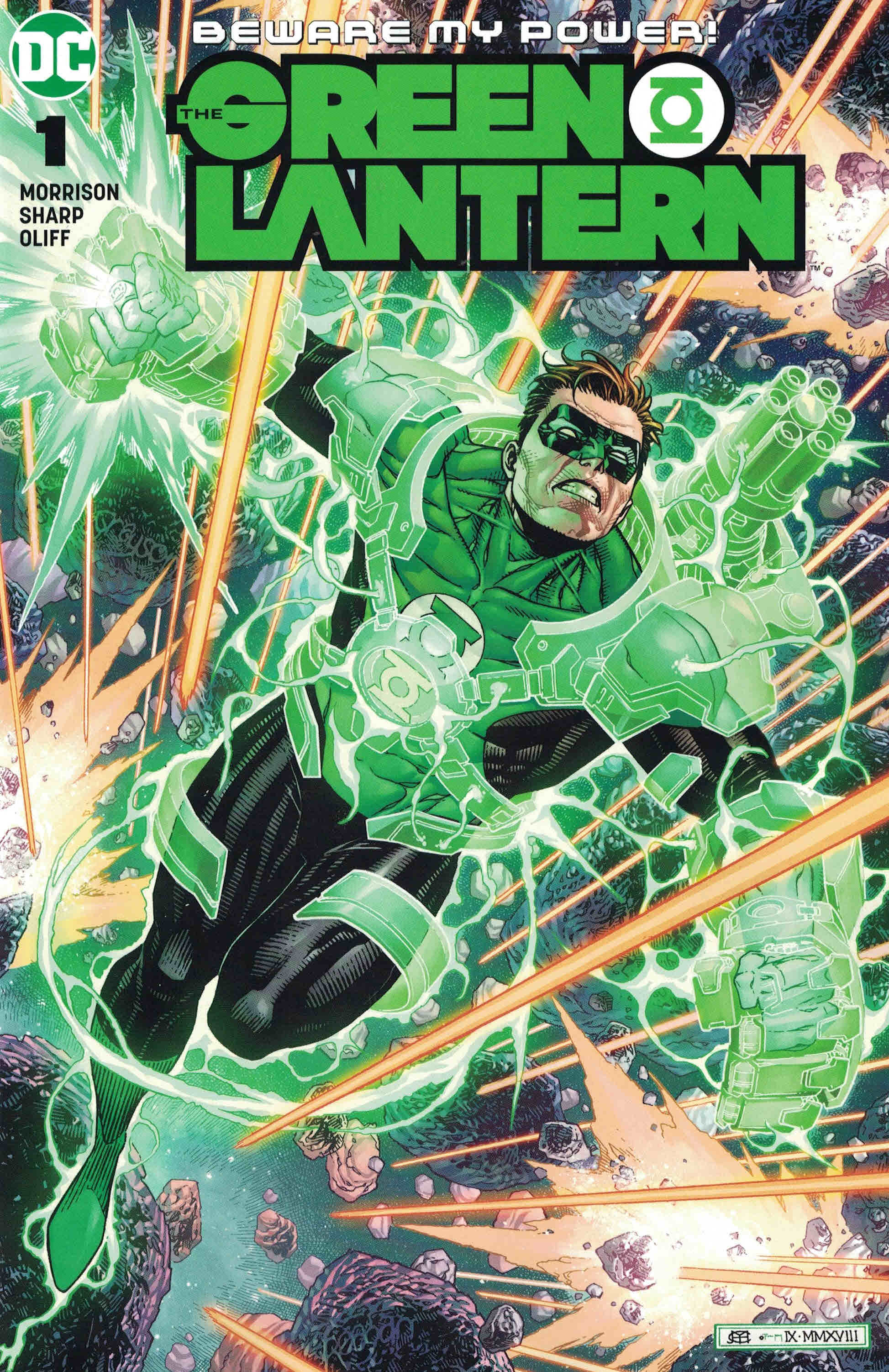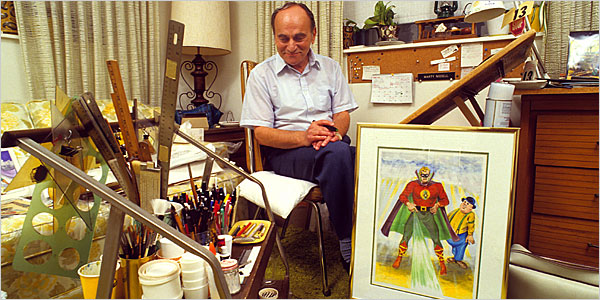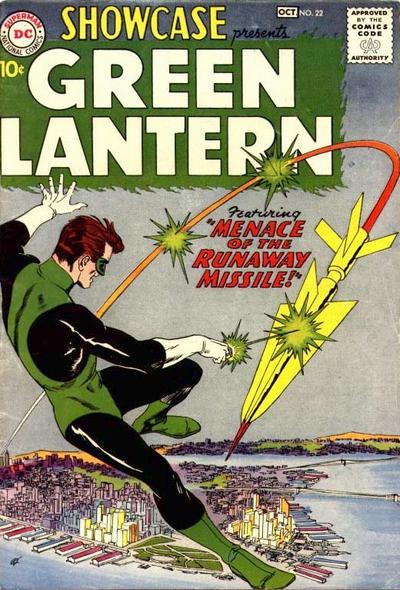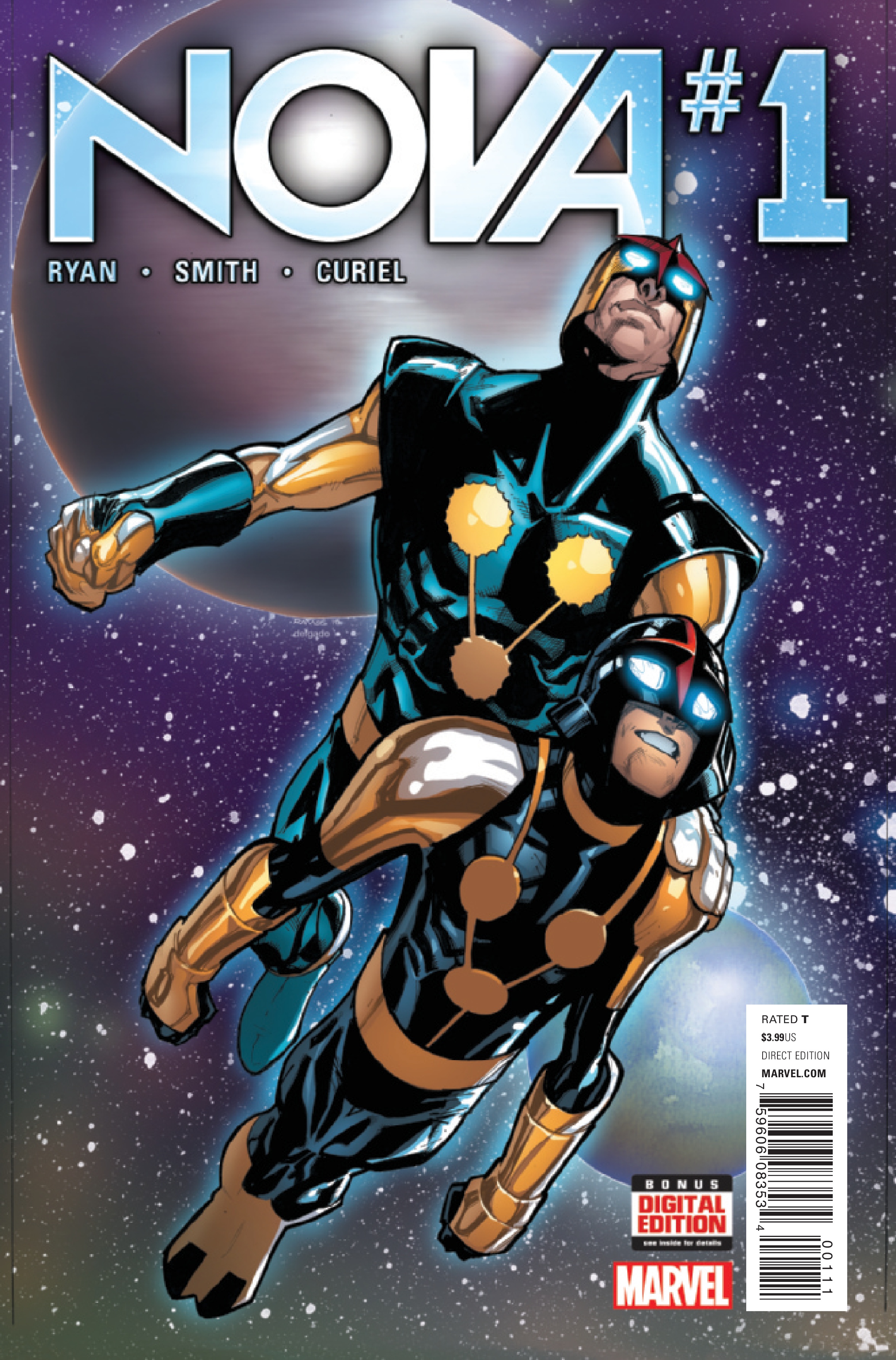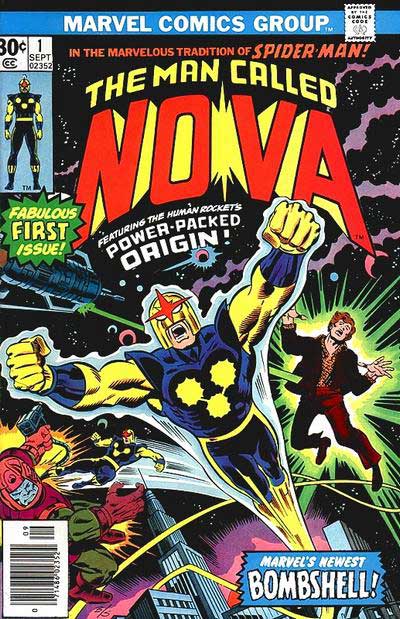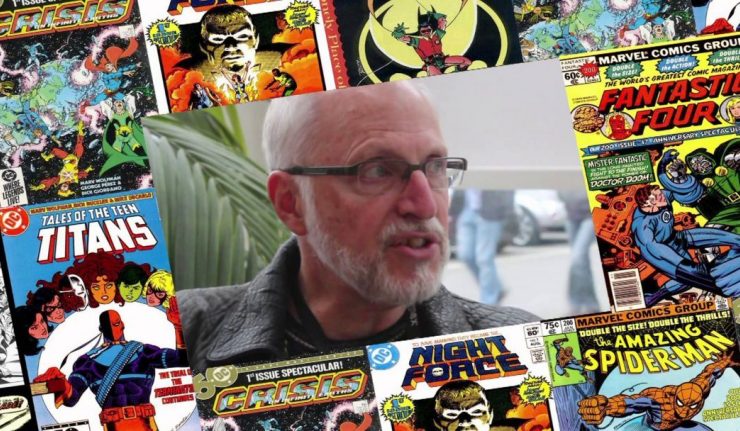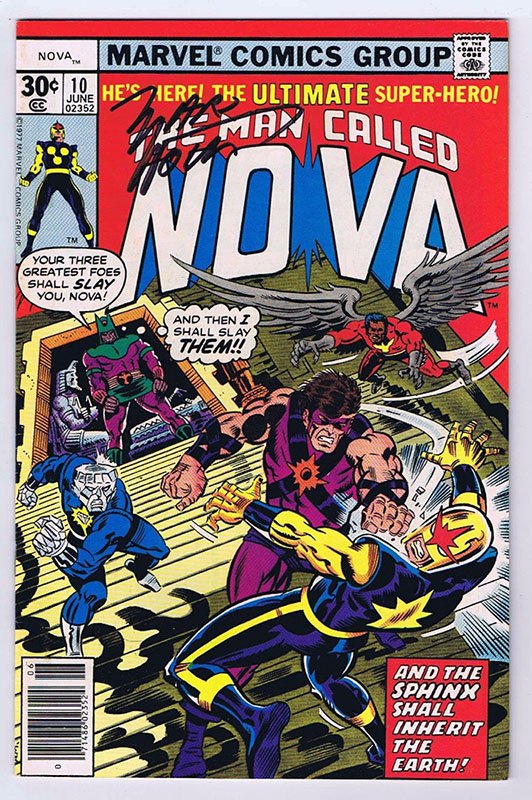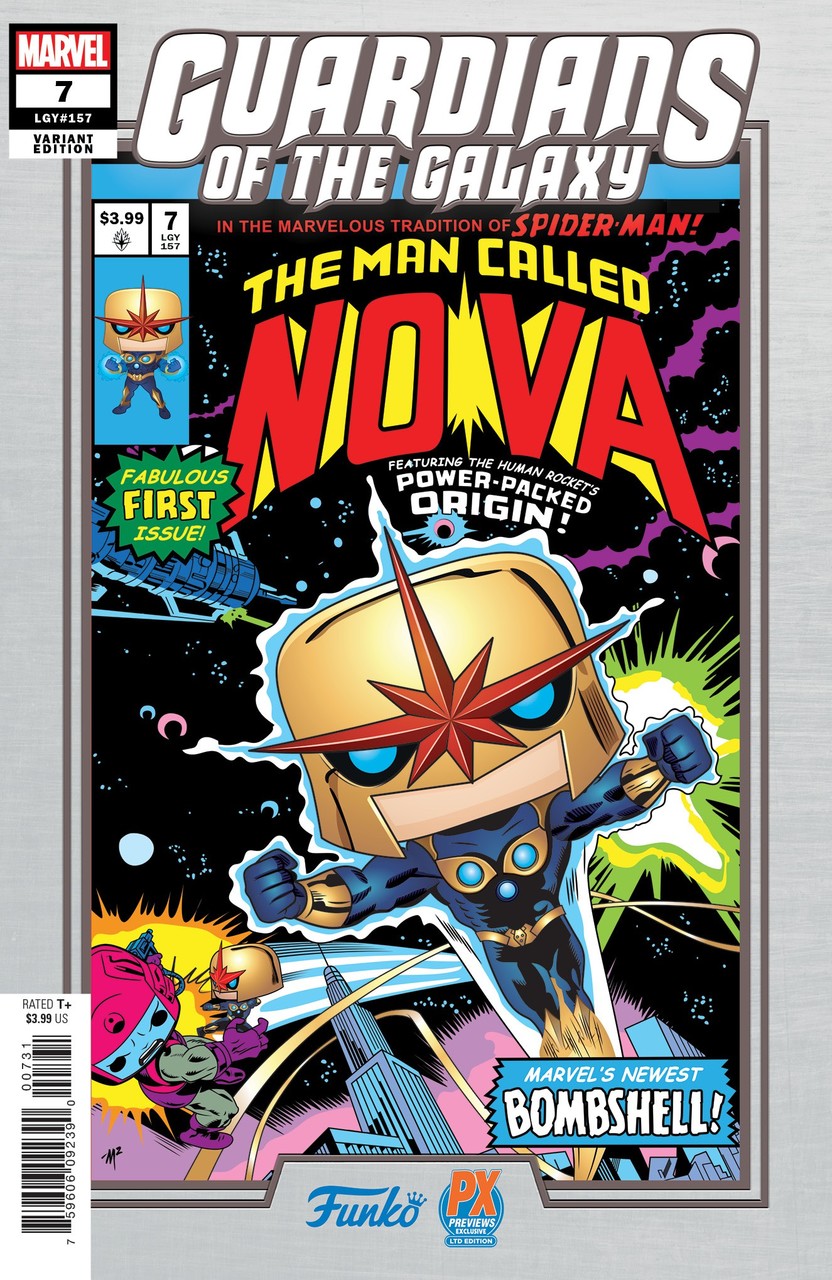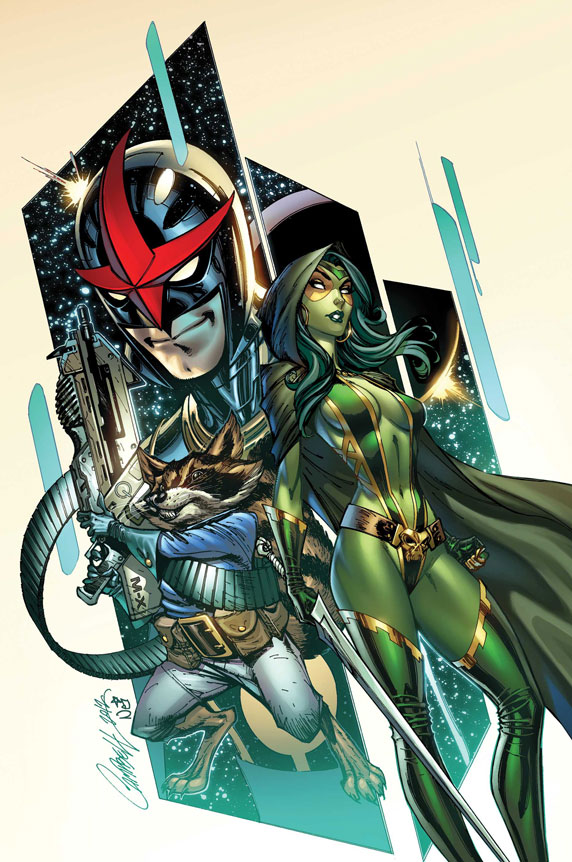
@TheBelser
What’s happening, my people. “The Belser” is here with another special article here on GodHatesGeeks. Why do I keep doing these lengthy articles, you wonder? Very positive feedback from my previous entries, of course! Also, it doesn’t hurt that I’ve had a lot of time on my hands. Either way, I like talking about the subject matter and it’s cool to discover new things in the research. I love the sub-genre of space comics. Intergalactic incursions. Power-mad despots. Cool space battles of good vs evil. I especially love the stories that deal with peacekeeping heroes that are charged with defending the galaxy.
The article is about such two characters: Nova, The Human Rocket for Marvel Comics; and Green Lantern, The Emerald Knight for DC comics. These two characters have been compared throughout the years due to their striking similarities and chosen area of combat. As always, these articles are meant as a guide to these spacefaring heroes to give you a better understanding of what makes them so awesome. In this first article, we are going to touch on their origins, their similarities/differences and the powers bestowed upon them. So, let’s get to it!!
How I Found the Characters
GREEN LANTERN
My first recollection of Green Lantern was on the Challenge of The Super Friends reruns on Cartoon Network. Here, he and the rest of The Super Friends went up against The Legion of Doom and their many schemes of world domination. His opponent on the show was his arch enemy Sinestro and many episodes would have them pitted against each other. In fact: an episode entitled ‘Secret Origins of the Super Friends’ featured a detailed retelling of Green Lantern’s origin (along with Superman and Wonder Woman). My interest was really piqued by the acclaimed series Justice League in 2001. Here, they had a Green Lantern for the team: an African American military veteran named John Stewart. I loved the character and wanted to know more about him and the Green Lantern Corps.
NOVA
My first glimpse of Nova The Human Rocket was on a short-lived show called My Secret Identity. It was a live-action superhero show aimed at kids starring a very young Jerry O’Connell (Stand By Me, Sliders,) and its reruns would air on The Sci-Fi Channel. The show was about a kid named Andrew Clements, who was a huge comic nerd. One day, he gets hit with an experimental photon beam in the basement of Dr. Jeffcoate, a scientist and his next-door neighbor. Very soon, he develops a standard set of superpowers that included super strength, super speed, and invulnerability. He also had the power of levitation, but he couldn’t propel himself. So, he would carry around a pair of aerosol spray cans and use them to fly through the air. He uses these abilities to fight crime (in secret, of course), solve his own personal problems, and help his friends.
During the pilot, when he first discovers his powers, he reads an old issue of a What If? comic featuring Nova, and notes how similar their origins are: a normal kid being zapped with an energy ray and getting superpowers. Ironically enough, in the very same scene, he recites an oath in his bedroom that starts off like the Green Lantern oath (“In brightest day, in blackest night…”). I liked the look of Nova and sought the character out. In the 90’s, I would see him mostly on Marvel trading cards, or The New Warriors comics. In high school, I discovered a fan site online called The Nova Prime Page that told me so much about him and his history. The character mostly disappeared after that until the epic “Annihilation” crossover hit the stands in 2006. Nova was put front and center in this story line, and I have been a huge fan ever since.
Inspirations and Creation
GREEN LANTERN
The comic industry was galvanized (and, essentially, founded) with the creation of Superman in 1938, and Batman in 1939. Sales were through the roof, and there was high demand to add more additions to this growing roster of heroes. Green Lantern was one of many characters created in the wake of this first superhero boom, often called the Golden Age of Comics. The original Green Lantern was created by the late artist Martin Nodell (who also helped to design the iconic Pillsbury Doughboy, if you’d believe it!). Green Lantern was created on a subway ride to Brooklyn.
According to Nodell’s obituary in The Los Angeles Times, Nodell noticed a trainman waving a green train lantern along the darkened tracks (2006,” M. Nodell, 91; illustrator who drew superhero Green Lantern”, The Los Angeles Times). That image stuck with him and he combined it with composer Richard Wagner’s epic opera, The Ring of the Nibelung. The opera is in four parts and it is centered around a magic ring that grants the power to rule the world (not content with just inspiring a classic character, this opera also inspired J.R.R Tolkien‘s Lord of The Rings franchise and the classic Bugs Bunny cartoon ‘What’s Opera, Doc?’). Nodell would later describe the origin of the hero in an interview in 2000 thusly:
“I picked out the name from the train man on the tracks who was waving a lantern, going from red to green. … Green meant go and I decided that was it. Then I needed a colorful and interesting costume. I was interested in Greek mythology and so the costume took on elements of that. It just all fell into place. When I sent it in, I waited into the second week before I heard the word to come in. I was ushered into Mr. [Max] Gaines office, publisher, and after sitting a long time and flipping through the pages of my presentation, he announced, ‘We like it!’ And then, ‘Get to work!’ I did the first five pages of an eight-page story, and then they called in Bill Finger to help. We worked on it for seven years” (Nodell in Black, Bill (2000). “An Interview with Green Lantern Creator Martin Nodell”. AC Comics)
The original Green Lantern’s name was Alan Scott, a name Nodell chose by looking through the New York phone book. The character debuted in All-American Comics #16 in July 1940. The main writer for this original run was Bill Finger (yes, THAT Bill Finger, co-creator of Batman, along with Bob Kane). Scott’s popularity would have the character see action in his own self-titled series and as a member of the Justice Society of America, the first-ever superhero team in comics. After World War II, superhero comics in general hit a sharp decline. Many were cancelled, including Green Lantern, which ceased publication in 1949 after 38 issues.
In the late 1950s, sci-fi films became the rage in Hollywood, ushering in the Space Age. Movies like It Came from Outer Space, Forbidden Planet, and Invasion of the Body Snatchers were king at the box office, and pop culture (and society in general) followed suit. DC Comics’ then-editor Julius Schwartz decided to revamp many of the company’s past superheroes with a more science fiction-oriented slant to them. The first attempt in this new direction was Showcase #4 in Oct. 1956 which debuted the second version of The Flash, Barry Allen.
The popularity of this book is often credited as starting the second superhero boom, which would later be known as the Silver Age of Comics. Showcase become a launching pad for these new versions of past heroes. Soon enough, Green Lantern was revived in Showcase # 22 in October 1959 by writer John Broome and artist Gil Kane. Several changes were made to the character:
– The basis of the Green Lantern’s powers was initially magical in nature. It is now replaced with a form of alien technology.
– The Green Lantern was no longer Alan Scott, but a test pilot named Hal Jordan. In fact, Jordan had no connection whatsoever to Scott.
– The costume was drastically redesigned.
– The character was given a new origin: He was no longer a single vigilante operating mainly on Earth. He was now one of a large group of intergalactic peacekeepers known as The Green Lantern Corps.
The innovations made with Hal Jordan would carry on to all successive Green Lanterns to this day.
NOVA
While Nova’s official debut was not until 1976, the character’s history dates to a decade prior in 1966. Nova began as the brainchild of legendary comic writer Marv Wolfman. At the time, Wolfman was merely a fanboy hoping to get into the comics industry. His fandom was such that he published his own comic fanzine called Super Adventures as sort of a resume for prospective comics publishers.
Within the third issue of Super Adventures, Wolfman created a hero called ‘The Star’, with friend (and future comics legend) Len Wein. The Star was initially “a doctor named Denteen who found a spaceship containing alien pills which gave him a different super-power every five minutes” (2002, ‘Genesis of Nova’). The pills turn out to have been created by an evil alien named Kraken Roo. Roo eventually gets powers and becomes a villain called The Celestial Man. This begins a rather convoluted storyline in which The Star split into two beings. One is absorbed into The Celestial Man, and the other is made into a new hero named BLACK NOVA.
This change comes with all the powers of the pills and a new costume which forms the template of what Nova’s uniform would eventually look like. In Super Adventures #9, the character sacrifices his life to save a superhero team called The Law Legion. The Black Nova costume is said to have been created by Len Wein. It was designed to be as a black and yellow skin-tight suit with five connected starbursts on the chest and a gold helmet with antennae. The hero’s helmet was inspired by a 1965 one-time Doctor Strange villain named Tiboro (2002, ‘Genesis of Nova’). The character was put on the shelf as both creators would become professionals within the field. Wolfman made his pro debut in 1968 for DC Comics. In the years that followed, Wolfman made many great contributions to the comics industry:
– With artist Gene Colan, He co-created the highly successful 1970s horror comic Tomb of Dracula, wherein he created BLADE, THE VAMPIRE HUNTER.
– He co-created one of Daredevil’s greatest arch-rivals, BULLSEYE.
– With artist George Perez, he successfully relaunched DC’s Teen Titans franchise as THE NEW TEEN TITANS. He created the popular lineup that most modern fans associate with the Titans, (Nightwing, Beast Boy, Starfire, Raven, Cyborg, etc.). The title became DC’s bestselling title of the early 80s, rivaling Marvel’s equally popular title at the time, THE UNCANNY X-MEN.
– Also, with George Perez, Wolfman wrote the definitive DC Comics crossover, CRISIS ON INFINITE EARTHS. This storyline streamlined the entire DC Universe, and killed off many beloved characters including, most famously, Barry Allen.
– He is responsible for the modern interpretation of Lex Luthor, changing him from a power-hungry mad scientist to a corrupt Donald Trump-like businessman.
– Years later, during Wolfman’s run on Tomb of Dracula, he decided to dust off the Black Nova character as a change of pace from Dracula’s dark, moody storylines.
– Wolfman states “I needed something lighter to write, something ‘more fun’ to do. I loved writing Dracula, perhaps my favorite assignment ever, but it was, for its time, a very dark book. I also felt comics were starting to get too internal, too dark-though not in the way comics or in the 80’s and 90’s. I wanted to return to the early Marvel comics, hence Nova” (Smith, 2007,‘The Man Called Marv’, Rocket Boosters# 1).
Wolfman wanted to create a book that appealed to much younger readers than those reading titles like Tomb of Dracula. The primary inspiration for this return was the original run of The Amazing Spider-Man by Stan Lee and Steve Ditko. So, the first change was to change The Star/Black Nova from an adult alien male to a human teenager. Personality-wise, Wolfman knew he wanted a character to be young and relatable like Peter Parker, but with a more normal background. Wolfman went to the then-associate editor for Marvel Comics, Jim Shooter, about the launch of this new character.
In an interview, Shooter states “I don’t remember what brought about the opportunity to launch a new character/title—probably some other title was cancelled, and Marv talked the brass into letting him replace it with something new. I know he gave a lot of thought to what made Peter Parker work and tried to develop an alter ego and supporting cast that had the same kind of presence and appeal. I know he wanted Rich Rider to be much more of an average guy, as opposed to brilliant Peter Parker.” (D. Smith, 2007, Flashback: A Look at The Man Called Nova, Rocket Boosters #2).
Another step for this new reboot was give his character an alliterative name that harkened back to the classic Marvel comics of the early 60’s (Ex: Reed Richards, Peter Parker, Matt Murdock, Bruce Banner, Scott Summers, etc.). Hence, Richard Rider was born. Next up was a re-design of the Black Nova costume. For this reason, Wolfman enlisted the help of legendary artist John Romita Sr. (best known for taking over artist duties on The Amazing Spider-Man after Steve Ditko).
Wolfman continues: “I wanted the costume simplified. It was very striking but fannish; antennae on the head, too many starbursts on the chest, overly cluttered, etc. I wanted also a starburst on the back. John (Romita) was the in-house designer at the time and I asked him. The original was about 80’% there but I needed to make it sleeker.” (D. Smith, 2007, Flashback: A Look at The Man Called Nova, Rocket Boosters #2).
The last touch on the look of Nova was inspired by the cartoon character, Mighty Mouse: they added a comet streak to his flight visuals. Finally came the name of the title. Wolfman felt the name Nova by itself was ‘too feminine’. So, he went to the guru of all things Marvel, Stan Lee, for advice. It was Stan who suggested calling the title ‘THE MAN CALLED NOVA’. With that, The Man Called Nova #1 debuted in September 1976.
After decades, it was decided to get the Nova character bring to its roots. For this, the latest Nova to take up the mantle is another teenager Sam Alexander, created by writer Jeph Loeb, acclaimed comic book and screenplay writer.
Here are some of Loeb’s career highlights:
– Loeb created the Teen Wolf franchise. He wrote the original 1985 movie starring TV star Michael J. Fox, as an average kid who turns into a basketball playing werewolf, and becomes the most popular kid in school. He also came up with the story for the 1987 sequel, Teen Wolf Too with another TV star, Jason Bateman, as the boxing champion werewolf cousin of the Michael J. Fox character from the original.
– Loeb wrote the Arnold Schwarzenegger action movie Commando.
– Loeb has served as a writer/producer for several hit shows like Lost, Smallville, Heroes, Agents of SHIELD, and the Marvel Netflix Universe.
Sam Alexander was created initially for the ULTIMATE SPIDER-MAN cartoon on Disney XD. The character made his Marvel Comics debut in Marvel Point One #1 (November 2011), by writer Jeph Loeb, and designed by artist Ed McGuinness. In an intimate touch and personal, Sam is named after Loeb’s son who passed away in 2005 from a long battle with bone cancer.
-JaDarrell Belser
Part two coming soon!

